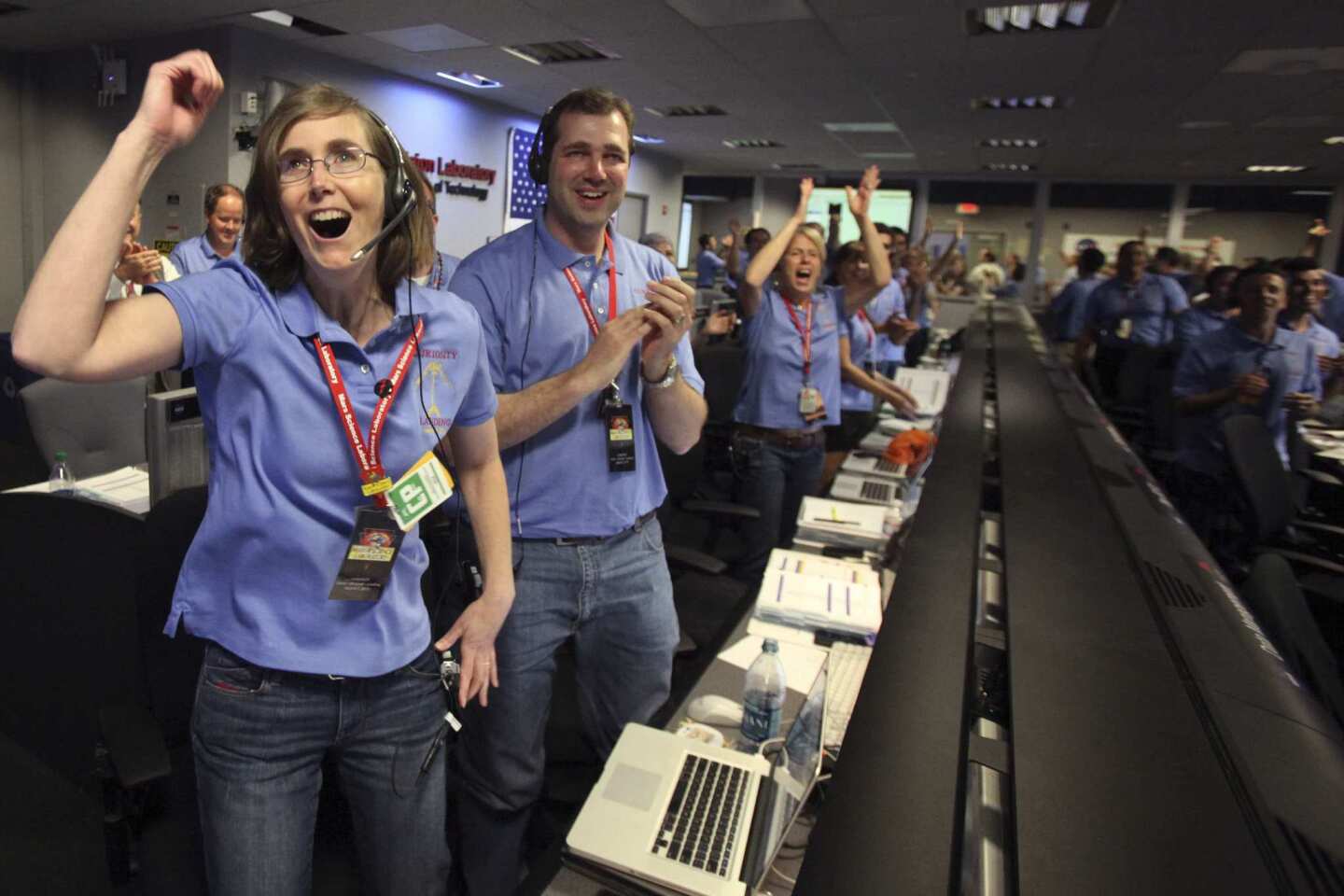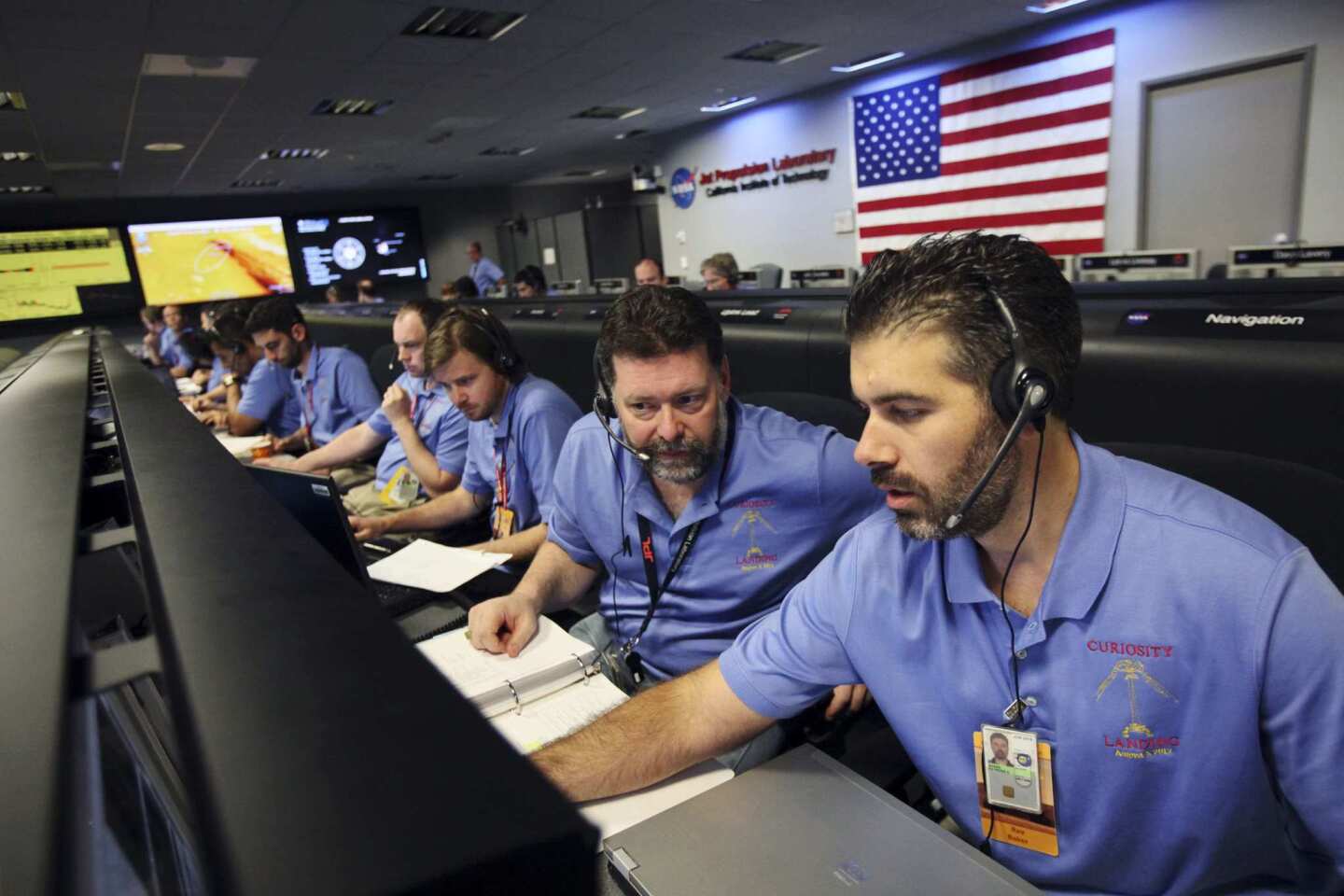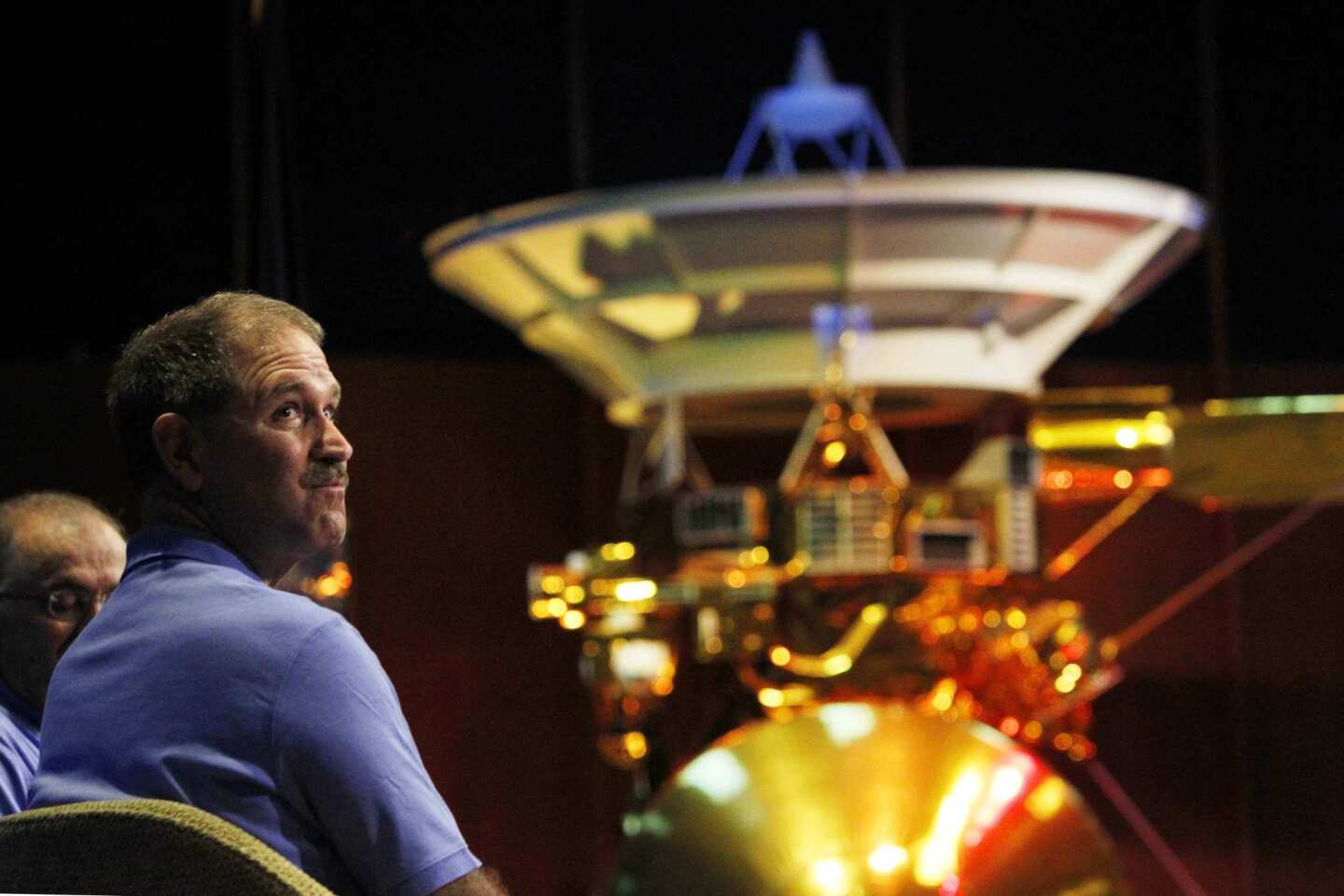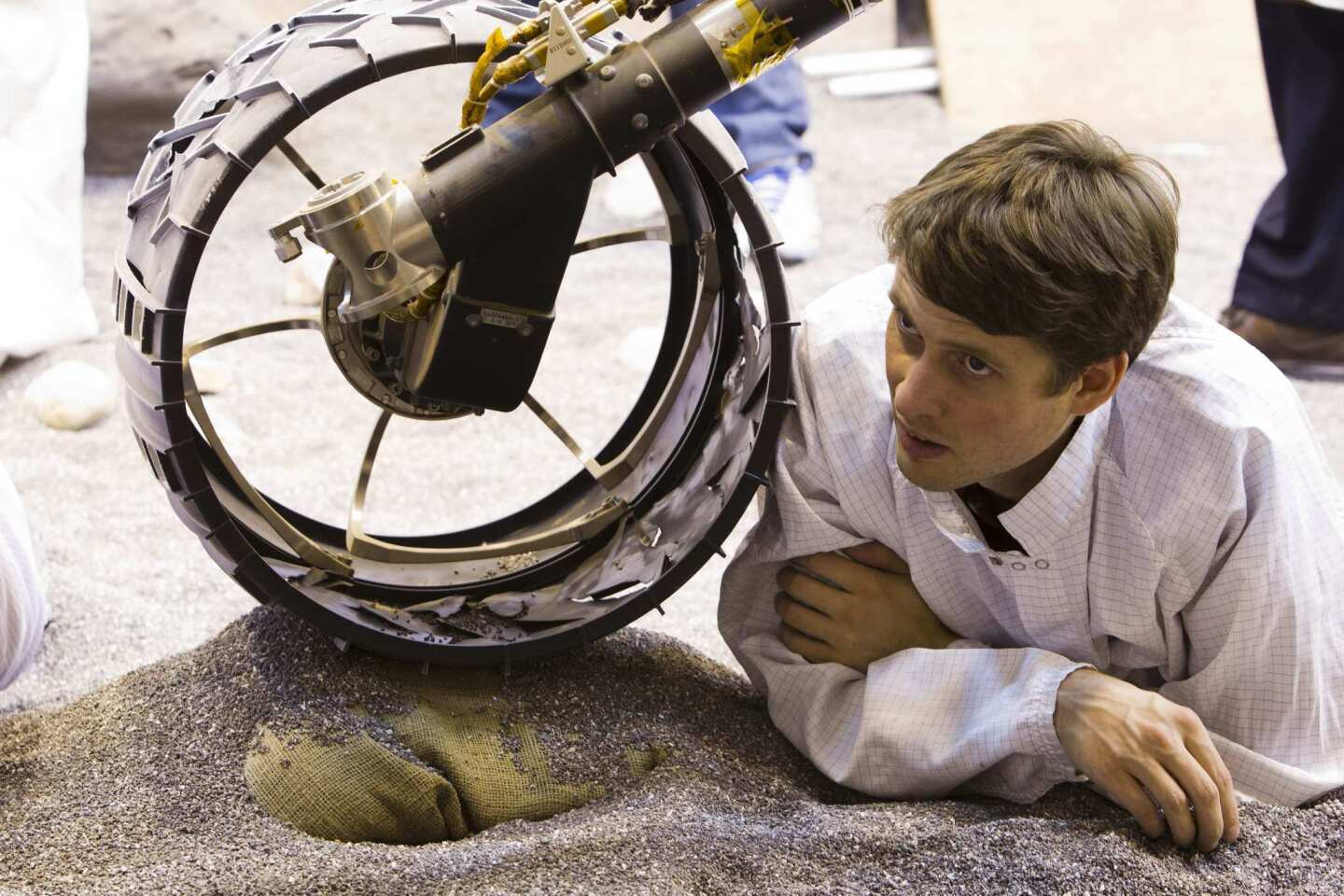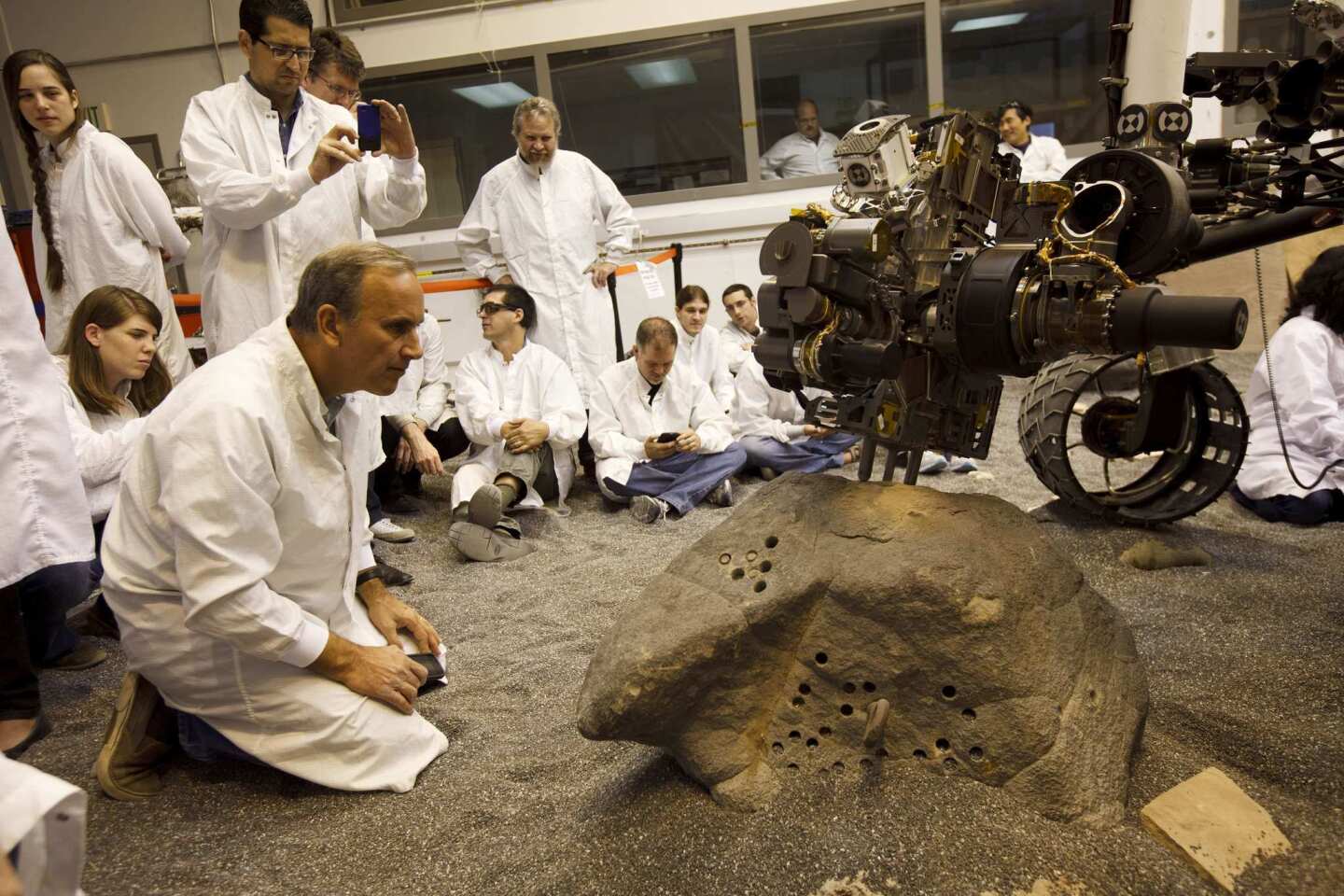NASA scientist calls Curiosity’s first year on Mars ‘awesome’
On the first anniversary of NASA’s rover Curiosity’s touchdown in Gale Crater, Mars Science Laboratory lead scientist John Grotzinger says the team has a lot to be thankful for — and much more to look forward to. The Caltech geologist spoke with The Times about the risks the team took, the groundbreaking findings early in the mission and what they plan to do when they finally reach their goal: Mt. Sharp, the mountain in the middle of Gale Crater.
Curiosity’s mission was to search for habitable environments — places where microbial life could have potentially existed. And it found one before even getting close to Mt. Sharp. How do you guys feel about that?
It’s pretty awesome. We did not just find a habitable environment but one that’s actually very benign.
It’s nice to have that in the bag, and all the concerns we might have had about being able to find a target like that are taken care of. And it makes us go into a more mature, more relaxed phase of the mission. We’re still going to take our time to make sure that we really study things carefully along the way, but we’re really excited now to move as quickly as possible to Mt. Sharp — and investigate what we hope could be more habitable environments there.
What’s next, now that you’ve found a place that was once friendly to life?
We’re excited to be able to go through and basically document the diversity over which habitable environments might have existed on Mars. Different types of habitable environments — that might be the first thing.
When we get to the base of Mt. Sharp, we see evidence for the alteration of water, and we’ve basically got a parfait of three layers that we want to examine, distributed over hundreds of meters. The lower one is a hematite-rich unit, and then above that is the original clay-rich unit that we were always excited about, and then above that is the sulfate unit that we’re interested in.
And the second thing is, we still are very interested in looking for organic carbon. That’s a tall order.
How do you feel about the risks you took in choosing the landing site, Gale Crater?
These are the stuff that great missions of exploration are made of. Nobody discovers anything new by not taking any risk. And so for us the first one came really with choosing the landing site. And that was not straightforward. We had four excellent candidates, some of which, for a single attribute, may have been clearer prospects than Gale was.
But what Gale really gave us was a set of exploration targets, not just one. It’s by far the most diverse of the four landing sites. You don’t want just one objective; you want multiple objectives. If one doesn’t work, you have a backup plan.
And then, faced with the prospect of climbing this mountain three miles high, it became a no-brainer. Everybody wanted to go to the mountain [laughs]. But none of us predicted just how beautiful the view was when we landed … so we have never regretted it. It’s just worked out really well.
Where you surprised by the attention Curiosity received?
I’m frankly amazed at how much public interest there is in Curiosity. It far exceeds anything we ever imagined. After it landed, because it was so popular because of the ‘seven minutes of terror,’ we kind of thought it would spike and go away, and I think to some degree it has. But it’s amazing to me how many people follow it. And I think it may have been just the right mission for this country at just the right time.
When I travel, I run into people. For one reason or another we start chatting, and they follow the mission.
Curiosity’s sort of become the people’s vehicle. We get all kinds of engagement, and it’s just remarkable. I’m always impressed that the interest is out there.
Curiosity’s two-year mission has been extended, but for how long?
I would well imagine that as long as the rover is healthy and operating fine that NASA will be able to keep us funded in some capacity.
Did Curiosity’s initial successes play a role in the announcement of a 2020 rover?
Unquestionably. The architecture was always there in the Mars program, but I think everybody was waiting to see what happened on landing. And if it had gone the other way, a lot of people would have guessed that that announcement wouldn’t have happened so quickly, if at all. So I think NASA was wise to look at the public interest and the excitement and make that statement about the next rover. Of course, we in the Mars community, we’re thrilled about that.
Are scientists and engineers still excited, or has the buzz in the control room died down?
It’s amazing. I think if you were to talk to people, they would tell you the year has just flown by. This mission is many things, but one thing it is not is boring.
And it’s such an amazingly capable vehicle. We just get good at doing one thing and somebody comes up with an idea that’s a great combination of engineering and science — thinking, you know, if we did some testing in the test bed, we could prove up a new capability that we could try out on Mars. So we’re trying to look at new capabilities [for the instruments].
This interview has been edited for clarity.






